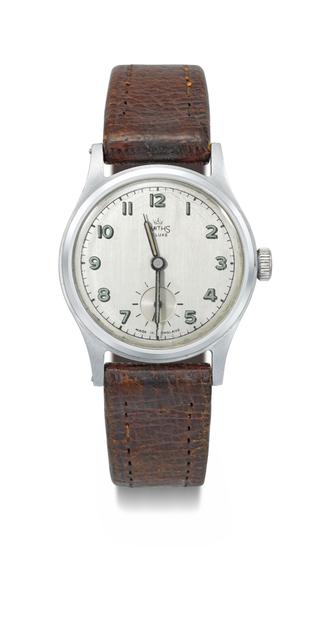






Pair cased watch with '6-hour' dial by Francis Stamper, London c.1685. The outer case is covered in tortoiseshell, inlaid with silver birds and flowers, the inner case made of plain silver, stamped on the inside, ‘AR 386’. Silver champlevé dial with steel hour hand and outer calendar ring with silver pointer. Movement with verge escapement, and signed ‘Fr. Stamper London 386’ on the backplate.
This watch records the time using a more unusual layout. The hour hand makes a complete rotation once every 6 hours, rather than the usual 12 hours. The dial indicate the 12 hours for each half of the day by placing the numbers 7-12 (in Arabic numerals) over the top of the numbers 1-6 (in Roman numerals). The minutes are listed from 1-60 between each hour marker. As the timekeeping of watches improved towards the end of the 17th century, watchmakers started to experiment with different dial layouts to allow the user to read the time more accurately. Earlier watches had used just one hand to read minutes by observing the position of the hour hand between the hour divisions. The system as seen on this watch, opened up the divisions between the hours enabling the minutes to be read more clearly, but ultimately did not catch on. See L2015-3123 for watch with similar dial.
Francis Stamper became a free Clockmaker in 1682. Clockmakers' Museum No. 1198.
Details
- Category:
- Clockmakers
- Collection:
- The Worshipful Company of Clockmakers
- Object Number:
- L2015-4108
- Materials:
- silver (alloy), brass (copper, zinc alloy), steel (metal), glass and tortoiseshell
- Measurements:
-
watch: 55 mm x 45 mm x 29 mm,
outer case: 54 mm x 54 mm x 25 mm,
- type:
- watch and verge movement
- credit:
- Lent by the Worshipful Company of Clockmakers




